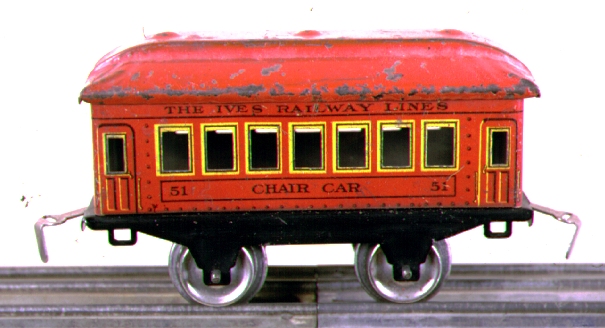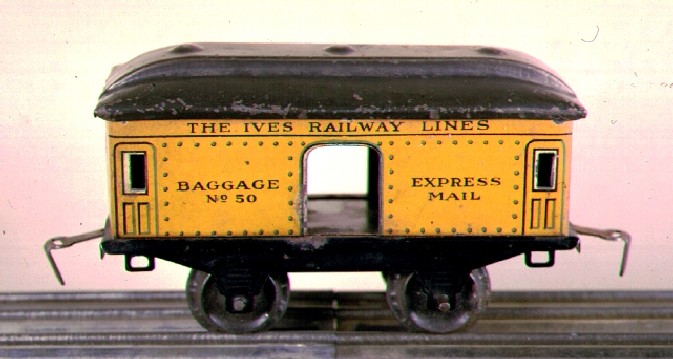
We think the yellow color is the earliest variation of the 6th series 50 series cars that started in 1915, the green ones pictured below are also the earliest variation of this series, note that the rivet detail is light blue litho and if you look closely at these cars there's an extra rivet on the top of each side of the baggage door, just below the "R" and 2nd "A" in RAILWAY. These cars also have couplers with rivets and blackened wheels.

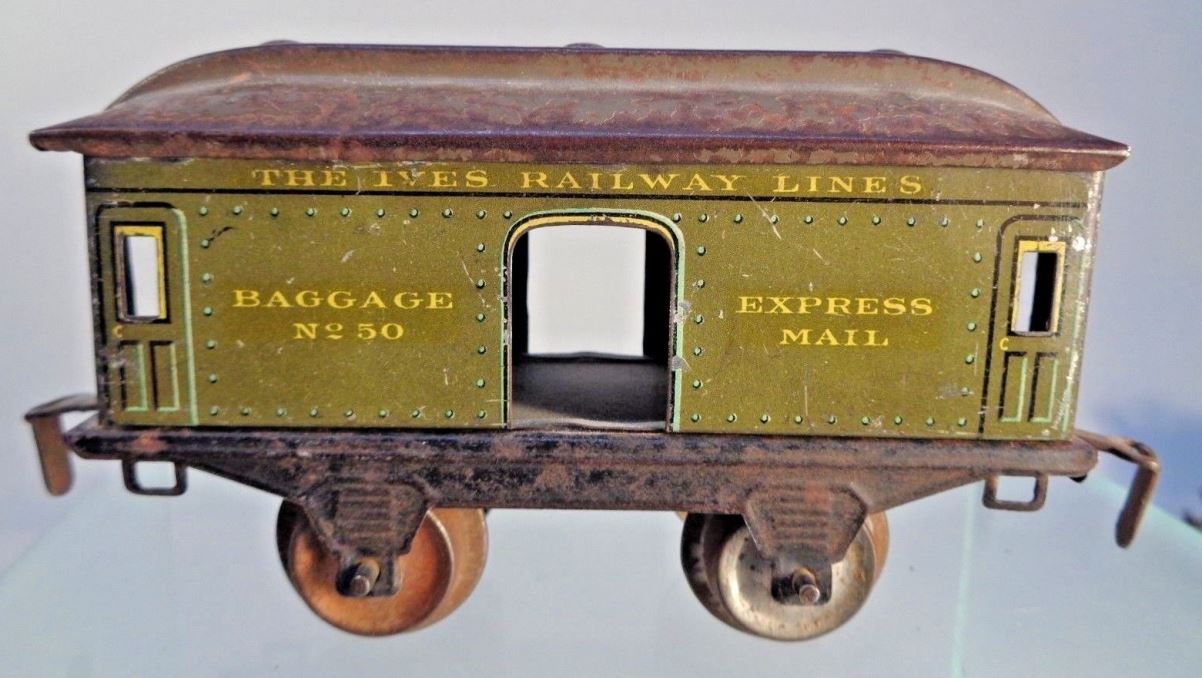
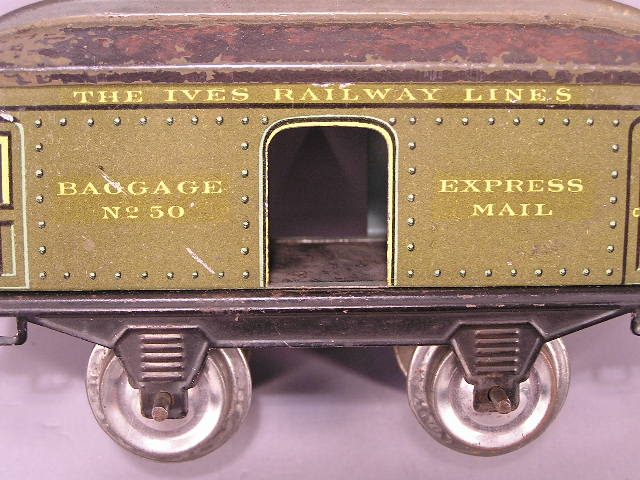
Close up of side on early baggage shows the crisp definition to the embossing in the frame. Also note the 'extra' rivet along the top just above the doors when compared to the later examples below.
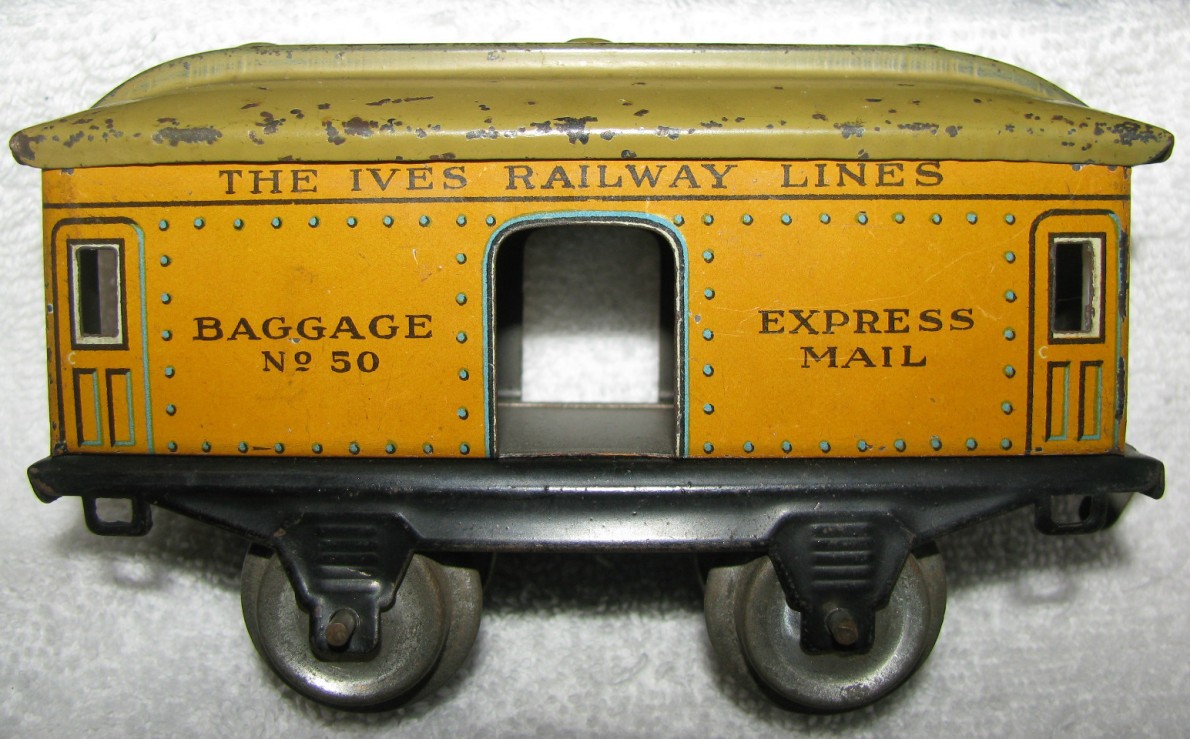
Early litho on a somewhat later frame with twist tab couplers and un-blackened wheels.
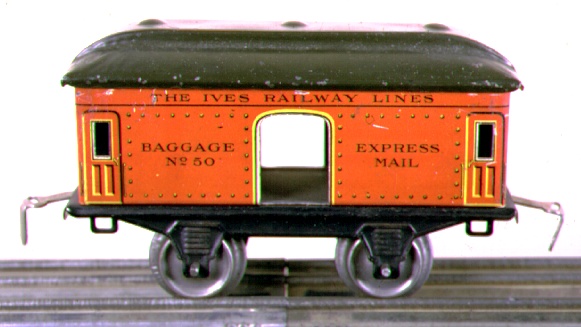
Circa 1922 - notice the extra rivet is missing on each side of the baggage door, also the couplers now use the twist tab type insertion. Note how the example below has much less definition in the frame embossing. This car is from a 1928 set.
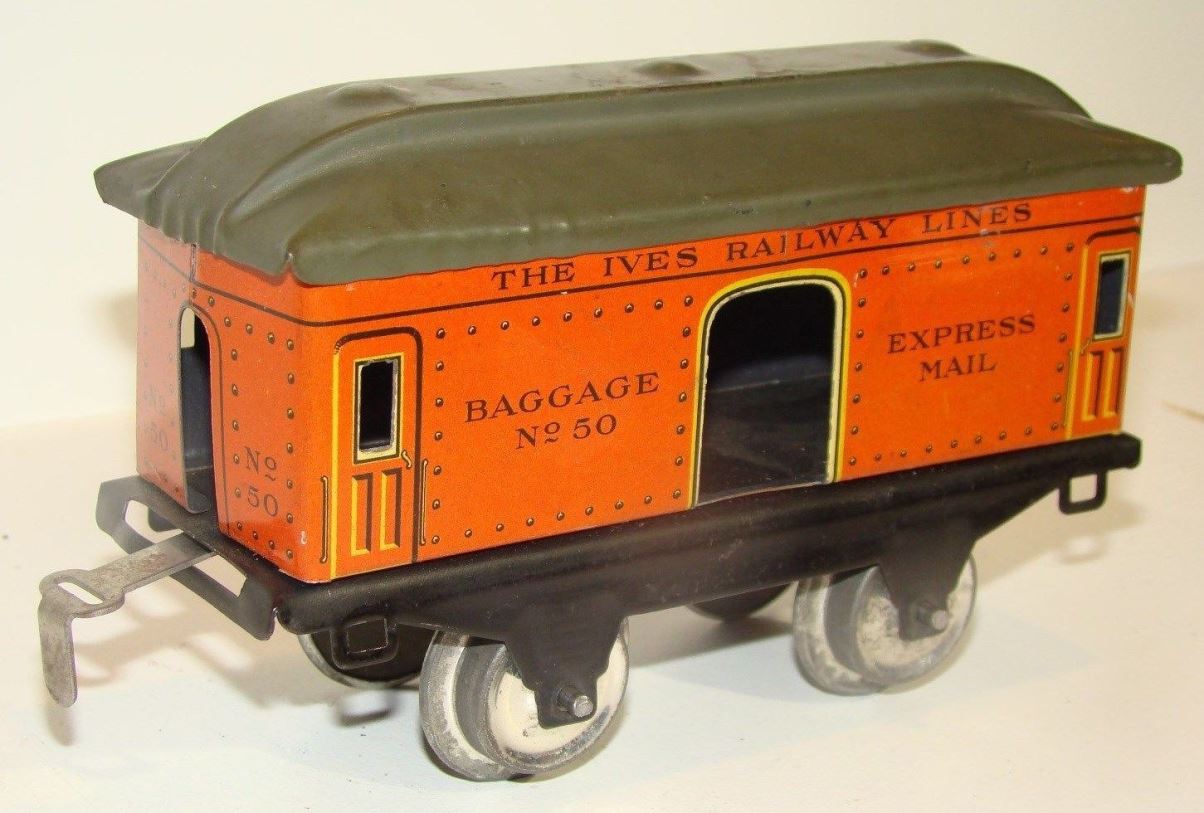
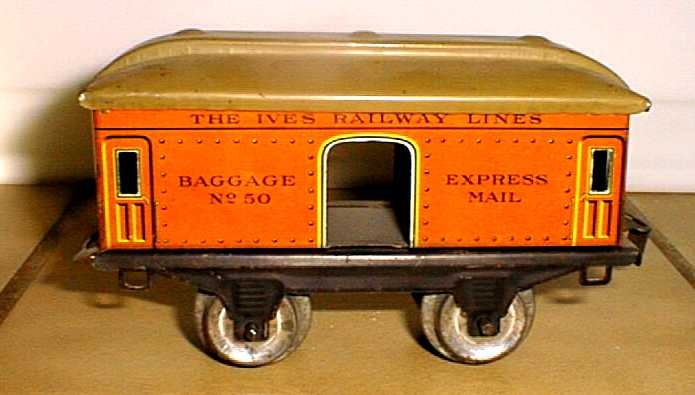
Circa 1923-25 this orange variation comes with a buff or tan roof, it is our belief that these cars with tan roofs were used in special promotional sets given as premiums for a company called Larkin, in the mid 20s. At least two different Ives train sets were shown in Larkin Catalogs of this period.
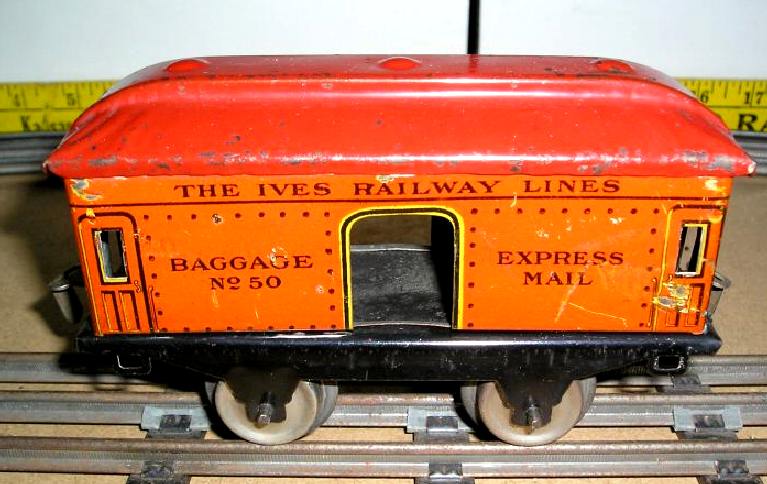
Circa 1926-27 - Orange baggage with red roof.

Circa 1915 Note lettering " 51 CHAIR CAR 51" has lines above and below, also notice the grab rails at the side of each door, they will change in later years, also note the light blue highlights in the litho. This car has couplers that are riveted to the frame. The example below has a green roof.
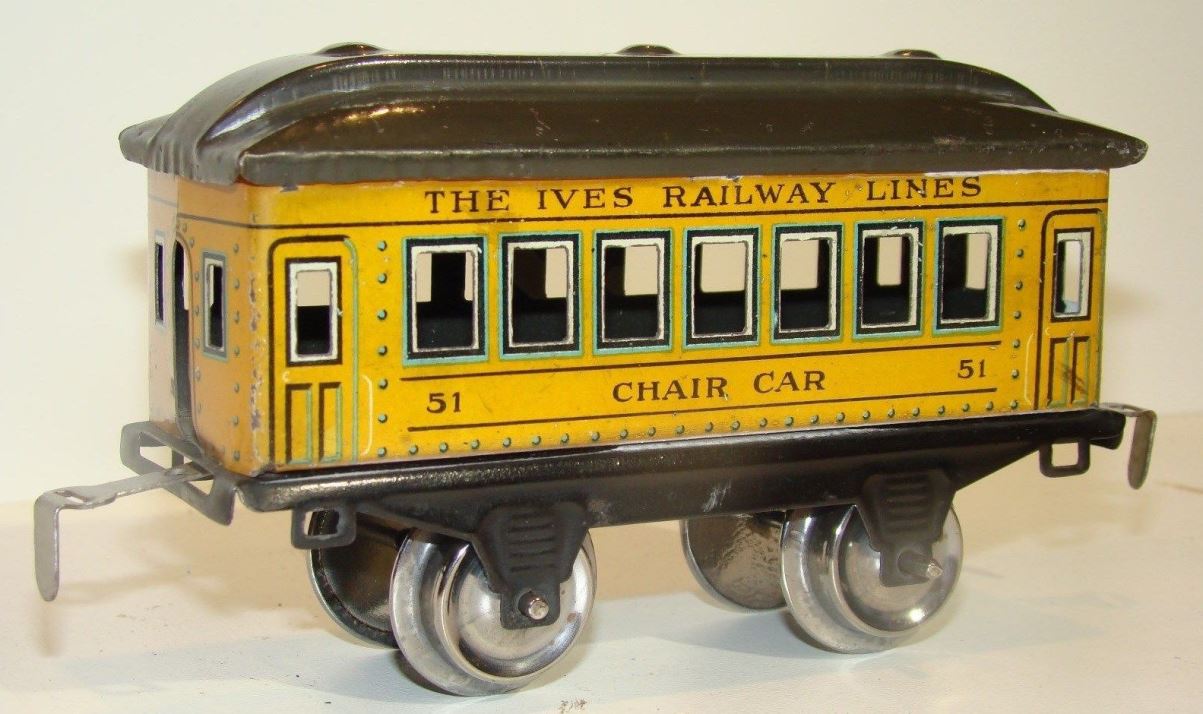
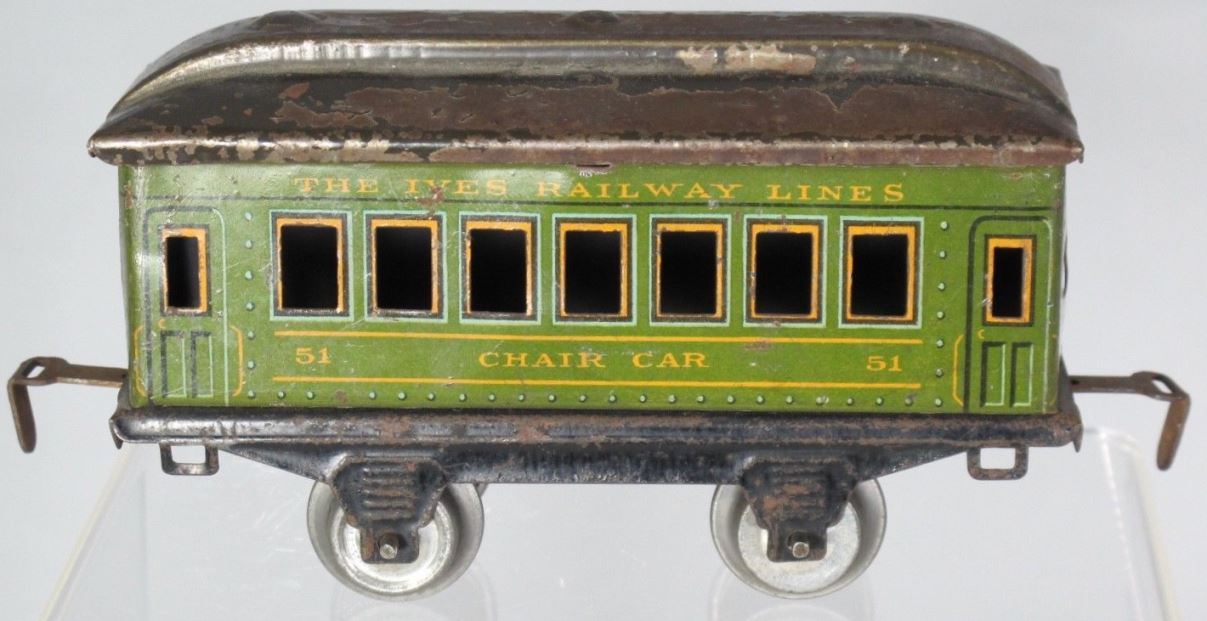
A somewhat later car this one has nickel wheels and twist tab couplers, although it still has the early litho.
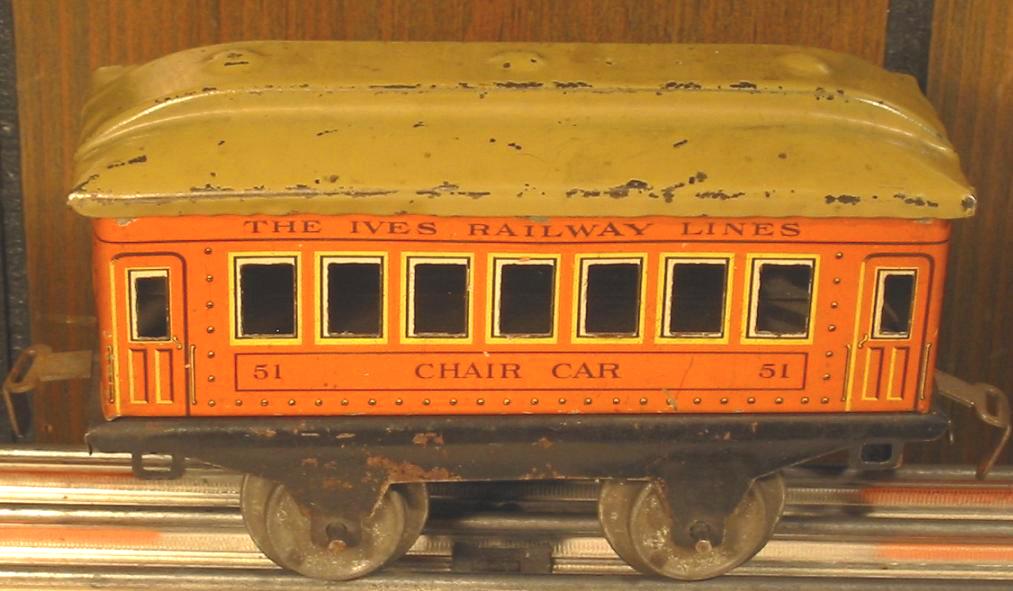
Another one of those cars with the tan (buff) roof, notice the litho on this car is more yellow than the one below, also the litho has changed, the doors have different grab rails and the lettering below the window is now enclosed in a box (see earlier examples)
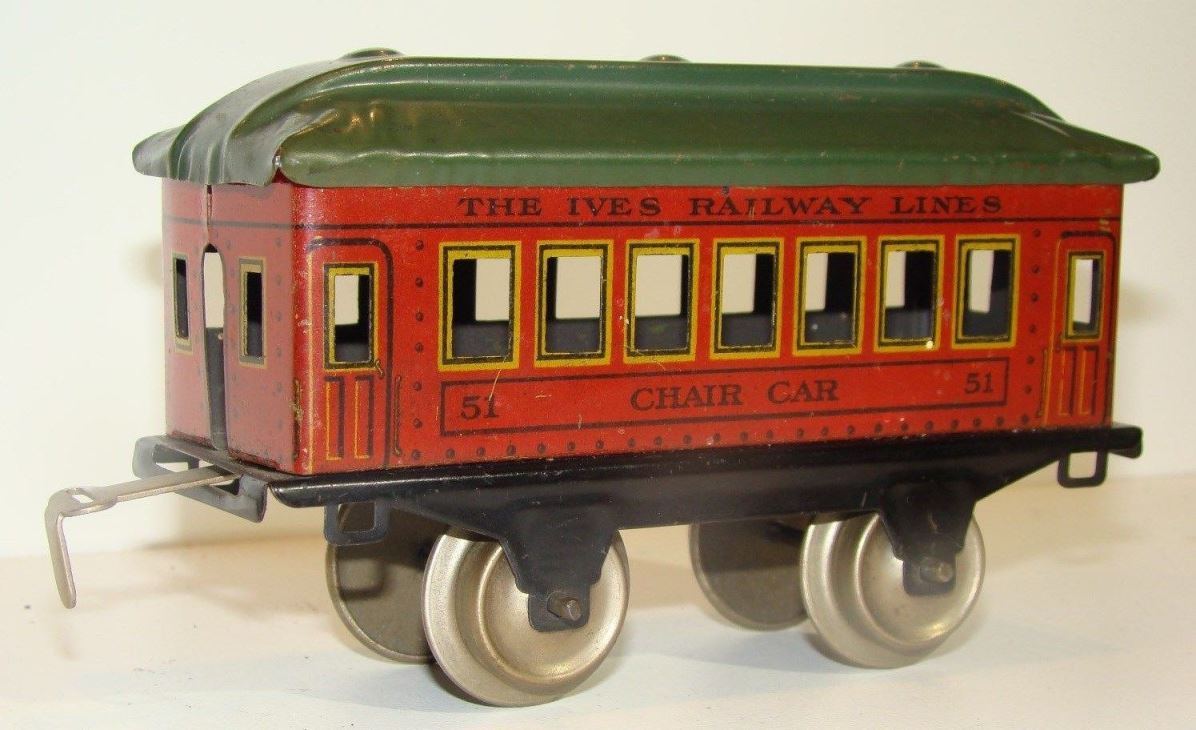
Similar to the car above this one is more orange and has a dark green roof, circa 1923.
Probably the last variation of this series, physical characteristics are similar to the cars above except this one is red or red/orange with a red roof.
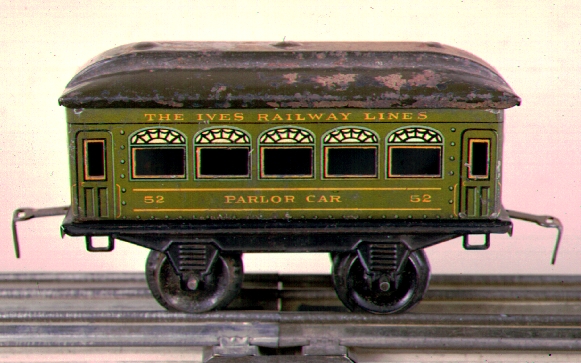
Earliest variation of the No. 52 parlor car - Notice the single lines above and below the lettering below the windows the blackened wheels and the different grab rails next to the doors.

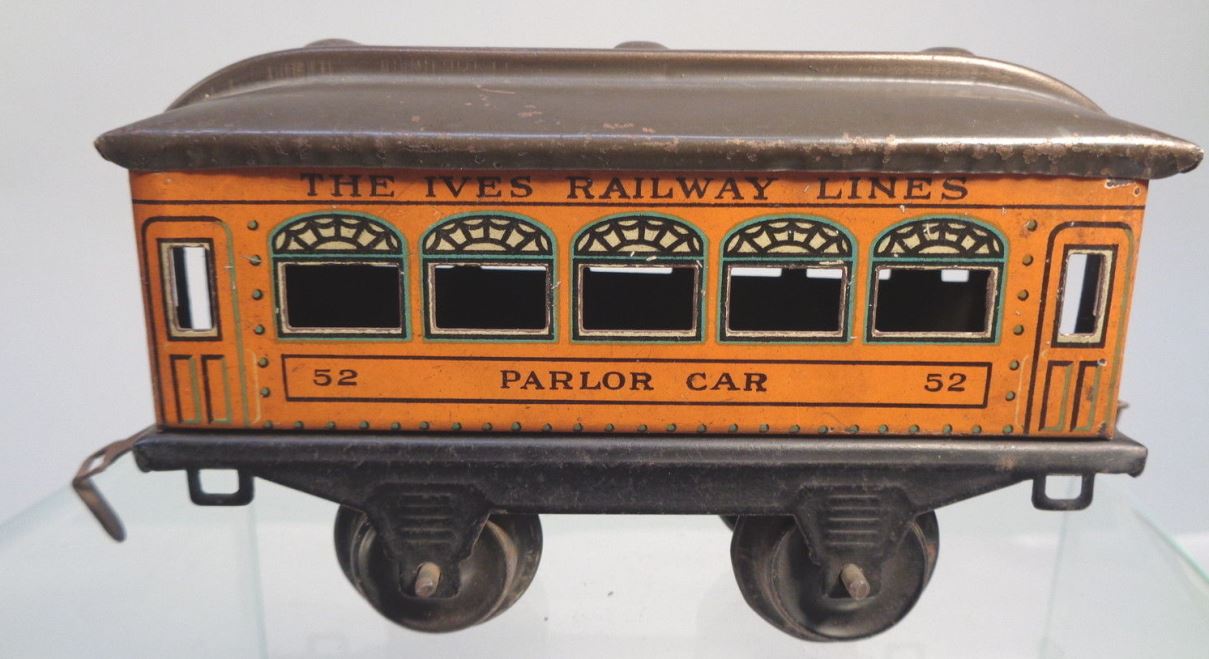
The car pictured above has what looks like an early frame with blackened wheels and rivet couplers, The litho is the earlier yellow (as opposed to orange) and has the earlier grab rails, but note that the lettering below the window is now enclosed in a box.
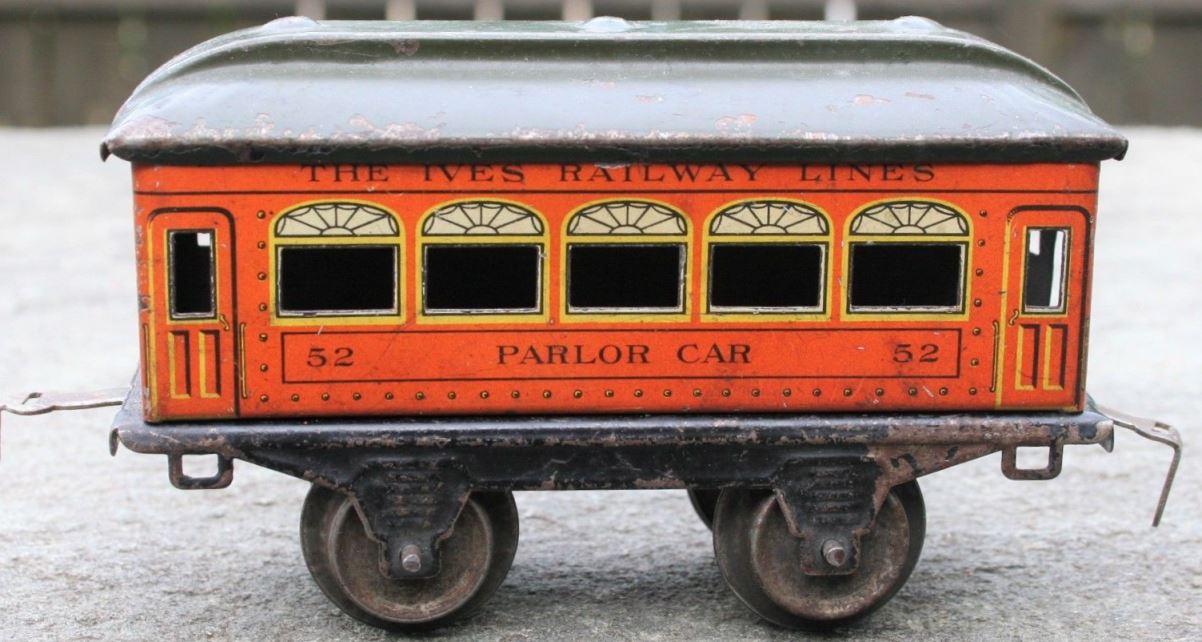
Circa 1922-23 this car has the later litho, nickel wheels, twist tab couplers and the darker orange color.
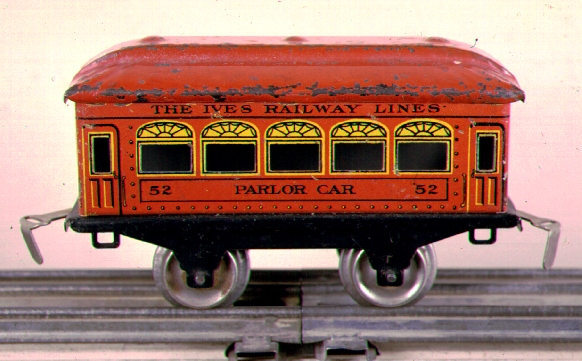
Circa 1925-27 This car has all the later features and red, orange/red color to the litho and roof. The embossing on the frame of this car is also very light. Sometimes you can tell how old a car is by the definition of the embossing on the frame, but this is not always fool proof as sometimes a frame got through that was never embossed at all. Note the light definition to the frame below.
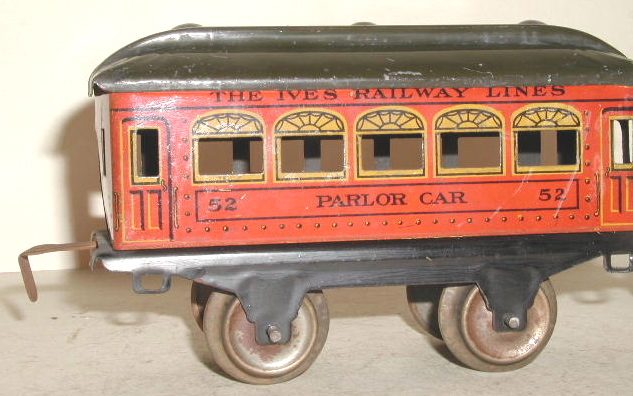
This orange car with the green roof and very light detailed frame shows up in sets from the late 1920s right up until 1928.
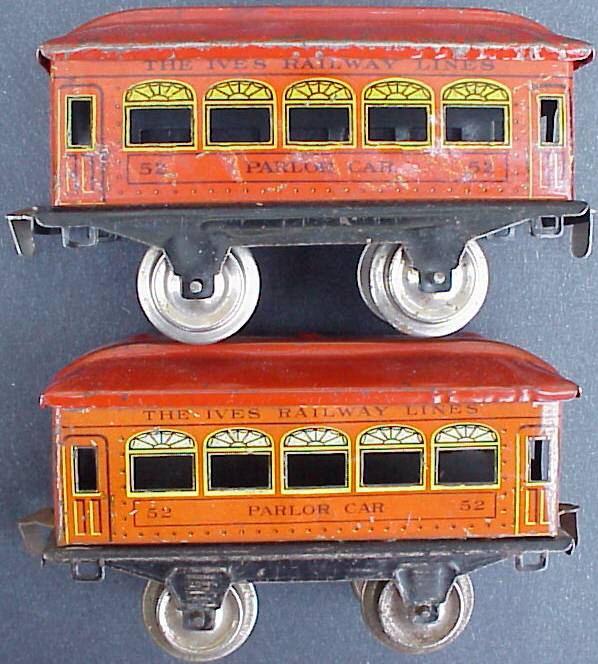
Both the No. 52 cars above came in the same original set which was sold in 1926.
